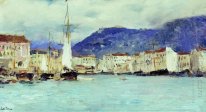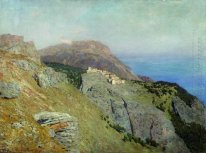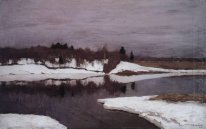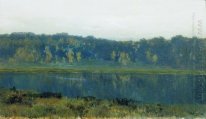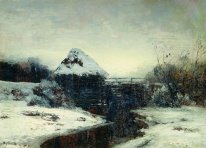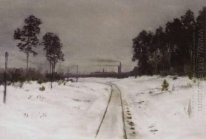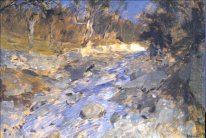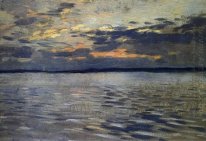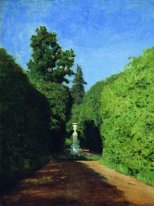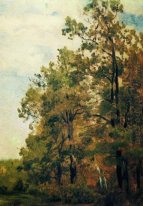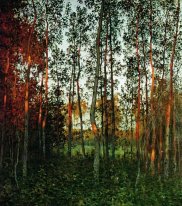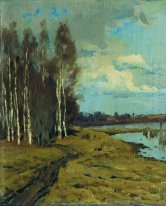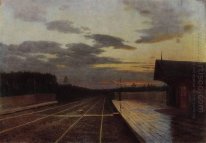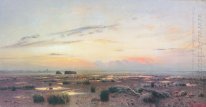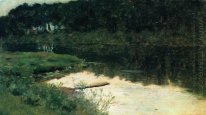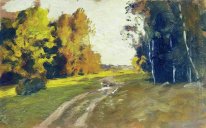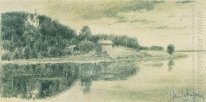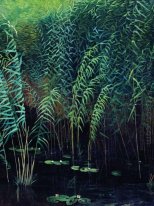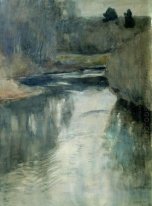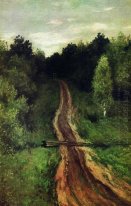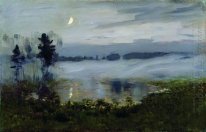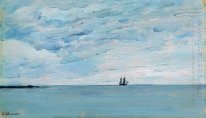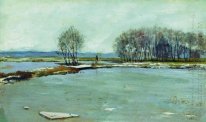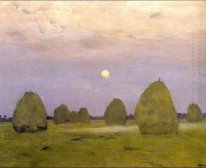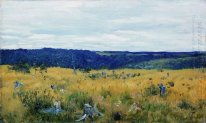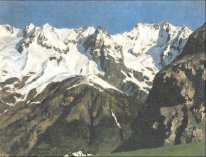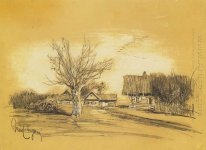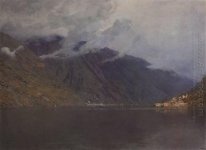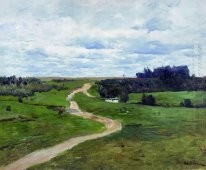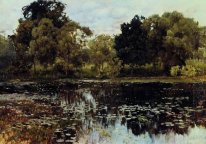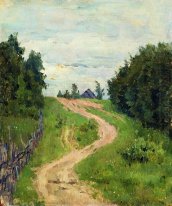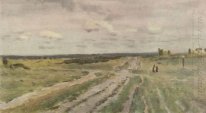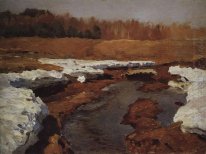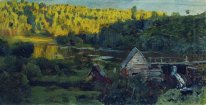Isaac Levitan
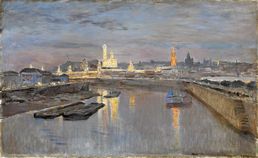
Isaak Levitan was born in 1860 in Kibarty, a small town in Lithuania, to the family of a blue-collar railroad worker. From 1873 to 1885, he attended the Moscow College of Painting, Sculpture and Architecture in Moscow, Russia. He studied under the famous Russian painters Savrasov and Polenov. From 1884, he displayed his paintings with the Society for Circulating Art Exhibitions* and in 1891 became member of the Society. From 1898, Levitan taught landscape painting at the Moscow College of Painting, Sculpture and Architecture.
Over the 40 years of his life, Isaak Levitan produced many landscapes which were later recognized as the finest masterpieces of Russian art. Levitan never looked for exotic and pretentious subjects for his painting. Although he traveled to other countries, he remained faithful to simple poetic motifs of his native land. The natural simplicity of motif and composition is the hallmark of Levitan's artistic genius.
It was evident from the very outset of Levitan's career that he had an extraordinary ability to awaken deep feelings by the means of landscape painting. Even though people are usually absent from his canvases, his works unfailingly speak of humanity. Levitan's paintings tell us something about ourselves by touching the chords of our spirit. Nature is presented through the prism of personal human experience. Hence Levitan's landscapes are often reckoned philosophical and psychological. The complexity of the human soul and the destiny of human being are the true subjects of his works.
In his early years, Levitan painted views of various places in the Moscow area. One of the best works of this period is "Autumn day. Sokolniky." This piece is the artist's elegy to the gray autumn day in one of the Moscow parks.
During the second period of his artistic career, Levitan was inspired the Volga. The painter spent several summers on the banks of the great Russian river. Plyos, a small town on the Volga, was Levitan's favorite spot, where he painted several canvases which made an invaluable contribution to the advancement of landscape painting in Russia.
From 1892 to 1895, Levitan divided his time between the towns of Vladimir, Vyshny Volochek, and the Tver region. The works of this period are considered to be the most powerful philosophical reflections of the artist on the destiny of man. The canvas "By the Deep Waters" conjures up the images of folk tales about the drowned. "The Vladimirka Road" depicts the route which was customarily used to lead prisoners to exile in the Siberia. "Over the Eternal Rest" speaks of the irreconcilable dualism of life and death. But not all the paintings of this period are characterized by such a dramatic outlook. A joyous hymn to life is heard in such works as "March," "Fresh Wind. The Volga," and "The Golden Autumn."
The last large canvas by Levitan is titled "The Lake. Rus." This monumental work, perhaps, parallels Rachmaninov's Second Piano Concerto. The artist's goal was to create an image that would be a summation of all that from the artist's perspective was typically Russian: vast expanses of water and land, white silhouettes of churches, enormous clouds driven by the wind, and rustling reeds. The canvas remained unfinished due to the painter's death. Isaak Levitan was buried at the Novodevichiye cemetery in Moscow in 1900.





